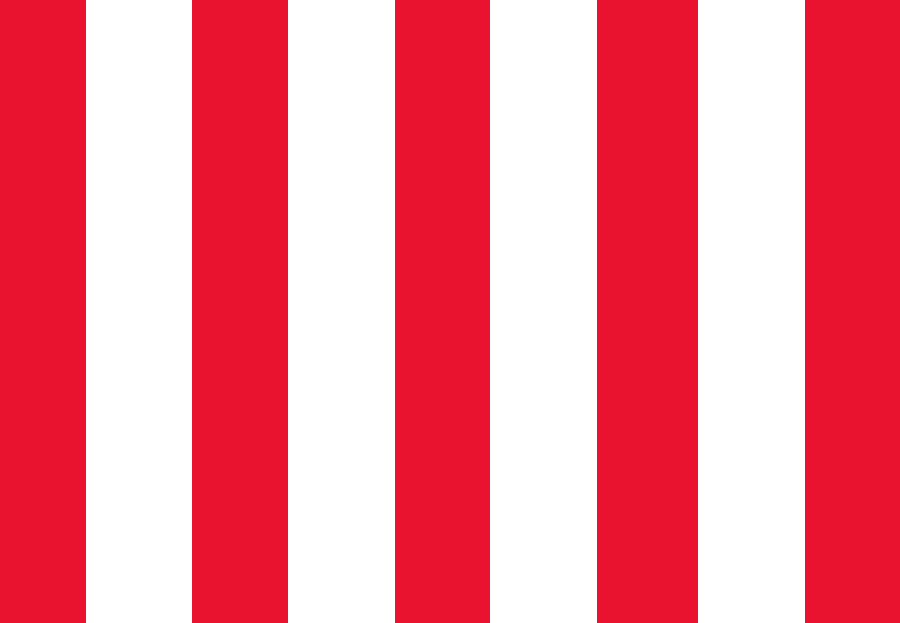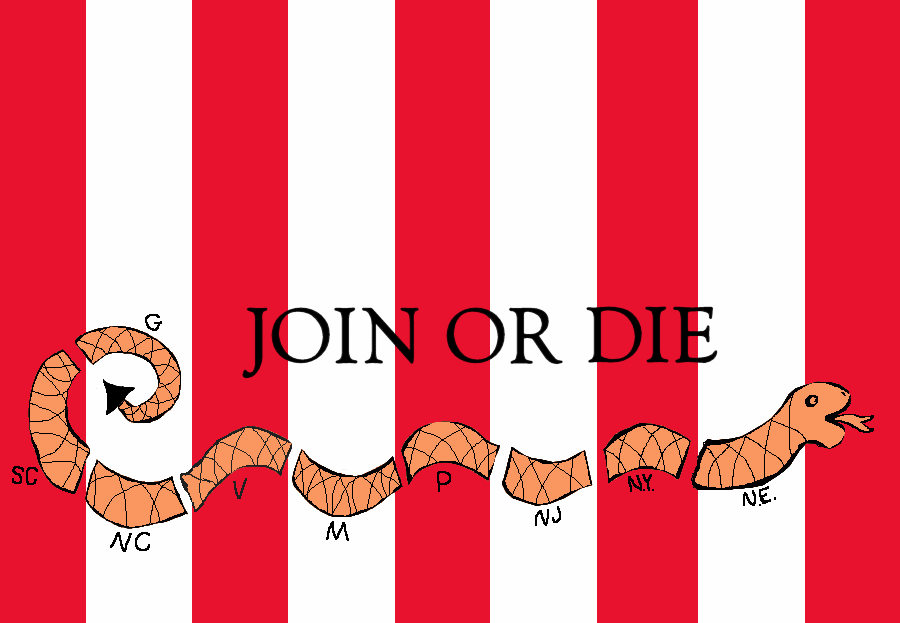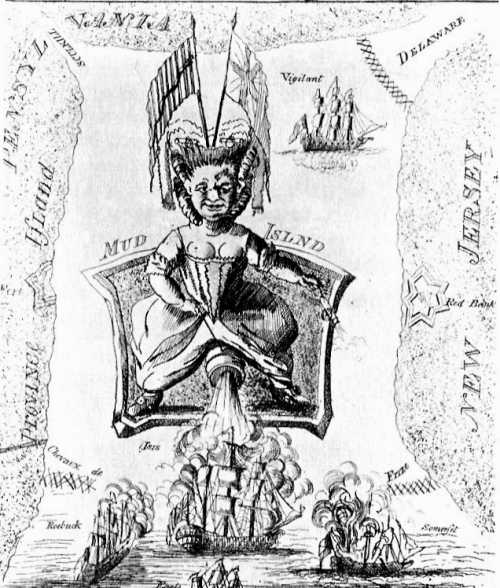


 During the 1760s, as a protest against the Acts which were being passed by the British Parliament, an underground movement began to spread through the American Colonies. Taking the name: Sons Of Liberty, the rebellious underground movement set as one of their goals the liberation of themselves, and their fellow North American colonists, from the burden of taxes being meted out by the Parliament.
During the 1760s, as a protest against the Acts which were being passed by the British Parliament, an underground movement began to spread through the American Colonies. Taking the name: Sons Of Liberty, the rebellious underground movement set as one of their goals the liberation of themselves, and their fellow North American colonists, from the burden of taxes being meted out by the Parliament.
 Although the British Parliament felt it was, and indeed might have been, justified in raising taxes on the American colonists in order to pay for the expenses incurred during the French and Indian War, many of those American colonists believed that they should at least have a voice in the Parliament. They felt that their concerns were not being heard across the Atlantic.
Although the British Parliament felt it was, and indeed might have been, justified in raising taxes on the American colonists in order to pay for the expenses incurred during the French and Indian War, many of those American colonists believed that they should at least have a voice in the Parliament. They felt that their concerns were not being heard across the Atlantic.
 But giving the American colonists a voice in the British Parliament would have been an acknowledgement that those colonists were equal to citizens of the British Isles. The fact of the matter was that the King and Parliament did not accept the colonists as their equals. In the eyes of most members of the British Parliament, the colonists were simply expendable servants of Great Britain, whose task was to prepare a savage land for eventual habitation by proper British citizens. Many of the American colonists, especially those who were recent emigrants from Great Britain, did not view themselves as inferior, in any way, socially, politically, or otherwise, to the British citizens who chose not to emigrate. They, therefore, objected to being treated as inferiors.
But giving the American colonists a voice in the British Parliament would have been an acknowledgement that those colonists were equal to citizens of the British Isles. The fact of the matter was that the King and Parliament did not accept the colonists as their equals. In the eyes of most members of the British Parliament, the colonists were simply expendable servants of Great Britain, whose task was to prepare a savage land for eventual habitation by proper British citizens. Many of the American colonists, especially those who were recent emigrants from Great Britain, did not view themselves as inferior, in any way, socially, politically, or otherwise, to the British citizens who chose not to emigrate. They, therefore, objected to being treated as inferiors.
 A string of Parliamentary Acts which imposed new taxes and/or restrictions on trade and commerce in which the American Colonies engaged has been cited as the underlying reason or cause of the rebellion that led to the American Revolutionary War. The taxes, in and of themselves though, were not the most abhorent aspect of the American colonists' situation. It would appear that the most prevalent complaint being voiced by the rebellious sector of the American Colonies was that the colonists had not been given the right to pariticipate in the levying of those taxes. British subjects who resided in either England, Wales or Scotland were oppressed by as many, if not more, taxes than the American colonists. But at least the residents of those countries were represented in the British Parliament. The denial by the King and Parliament to recognize the American colonists as politically represented British citizens was the force that motivated the more rebellious of the colonists to call for liberty.
A string of Parliamentary Acts which imposed new taxes and/or restrictions on trade and commerce in which the American Colonies engaged has been cited as the underlying reason or cause of the rebellion that led to the American Revolutionary War. The taxes, in and of themselves though, were not the most abhorent aspect of the American colonists' situation. It would appear that the most prevalent complaint being voiced by the rebellious sector of the American Colonies was that the colonists had not been given the right to pariticipate in the levying of those taxes. British subjects who resided in either England, Wales or Scotland were oppressed by as many, if not more, taxes than the American colonists. But at least the residents of those countries were represented in the British Parliament. The denial by the King and Parliament to recognize the American colonists as politically represented British citizens was the force that motivated the more rebellious of the colonists to call for liberty.
 The Stamp Act was the needle that broke the camel's back. The British Parliament passed an Act in March 1765 which required a stamp to be purchased and applied to printed documents. The Stamp Act was opposed by many of the American colonists. A group of Boston residents formed the Sons Of Liberty primarily to protest the Stamp Act. Members of the Sons Of Liberty traveled to other major cities along the Atlantic coast calling for delegates from the other colonies to meet in a congress to discuss what response should be directed toward Parliament. Of the twenty British Colonies in North America, nine of them sent delegates to participate in what came to be known as the Stamp Act Congress, held in New York City during October 1765. [The British colonies of: Georgia, New Hampshire, North Carolina, Virginia, along with Quebec, Newfoundland, Rupert's Land, Nova Scotia, Prince Edward Island, East Florida and West Florida did not participate.] Representing the colonies: Connecticut, Delaware, Maryland, Massachusetts-Bay, New Jersey, New York, Pennsylvania, Rhode Island & Providence Plantation and South Carolina are the nine vertical stripes (five red alternating with four white) of the first flag created by the Sons Of Liberty.
The Stamp Act was the needle that broke the camel's back. The British Parliament passed an Act in March 1765 which required a stamp to be purchased and applied to printed documents. The Stamp Act was opposed by many of the American colonists. A group of Boston residents formed the Sons Of Liberty primarily to protest the Stamp Act. Members of the Sons Of Liberty traveled to other major cities along the Atlantic coast calling for delegates from the other colonies to meet in a congress to discuss what response should be directed toward Parliament. Of the twenty British Colonies in North America, nine of them sent delegates to participate in what came to be known as the Stamp Act Congress, held in New York City during October 1765. [The British colonies of: Georgia, New Hampshire, North Carolina, Virginia, along with Quebec, Newfoundland, Rupert's Land, Nova Scotia, Prince Edward Island, East Florida and West Florida did not participate.] Representing the colonies: Connecticut, Delaware, Maryland, Massachusetts-Bay, New Jersey, New York, Pennsylvania, Rhode Island & Providence Plantation and South Carolina are the nine vertical stripes (five red alternating with four white) of the first flag created by the Sons Of Liberty.
 In Boston, a large old elm tree was used as a meeting place. It was a popular spot where anyone could voice his, or her, opinion, and be guaranteed an audience. Since the Sons Of Liberty met under the arching branches of the elm tree, it came to be known as the Liberty Tree. Eventually, the clandestine meetings of the Sons Of Liberty drew the attention of the provincial authorities, and it was cut down. But the removal of the tree did not discourage the Sons Of Liberty from meeting. A pole was set upright near the site of the original tree, and around it the Sons Of Liberty gathered. The so-called Liberty Pole became a popular device imitated throughout the colonies during the late-1700s to provide rallying points for dissidents. The pole would be set upright in the town square or some other conspicuous location. A commonly accepted signal that a rally was to be held was the placing of a hat on the top of the town's Liberty Pole.
In Boston, a large old elm tree was used as a meeting place. It was a popular spot where anyone could voice his, or her, opinion, and be guaranteed an audience. Since the Sons Of Liberty met under the arching branches of the elm tree, it came to be known as the Liberty Tree. Eventually, the clandestine meetings of the Sons Of Liberty drew the attention of the provincial authorities, and it was cut down. But the removal of the tree did not discourage the Sons Of Liberty from meeting. A pole was set upright near the site of the original tree, and around it the Sons Of Liberty gathered. The so-called Liberty Pole became a popular device imitated throughout the colonies during the late-1700s to provide rallying points for dissidents. The pole would be set upright in the town square or some other conspicuous location. A commonly accepted signal that a rally was to be held was the placing of a hat on the top of the town's Liberty Pole.
 At some point the hat on the top of the pole was replaced by a flag flown from its side. Things do not generally come into existence spontaneously and independent of exterior influences. The flag of nine vertical stripes may have developed from the British Red Ensign. The Red Ensign was a flag created for military use. Any use of it by the Sons Of Liberty would have been illegal; that in itself would have been motivation for the Red Ensign to be used as a protest. Then, at some point, the Union Jack would have been removed from the flag's canton, leaving a solid red field. In the 09 May 1754 issue of the Pennsylvania Gazette, publisher Benjamin Franklin printed an engraving he had devised showing a rattlesnake cut into eight segments (Georgia being omitted) along with the motto: JOIN, or DIE. [Paul Revere later published a design similar to Franklin's, but with Georgia included.] It is possible that, following the Stamp Act Congress, in which nine of the Colonies were represented by delegates, someone came up with the idea of adding white stripes to the solid red field of the ensign so as to create nine equal segments of the whole, symbolizing the nine equal colonies who were willing to protest the British Parliament's oppression.
At some point the hat on the top of the pole was replaced by a flag flown from its side. Things do not generally come into existence spontaneously and independent of exterior influences. The flag of nine vertical stripes may have developed from the British Red Ensign. The Red Ensign was a flag created for military use. Any use of it by the Sons Of Liberty would have been illegal; that in itself would have been motivation for the Red Ensign to be used as a protest. Then, at some point, the Union Jack would have been removed from the flag's canton, leaving a solid red field. In the 09 May 1754 issue of the Pennsylvania Gazette, publisher Benjamin Franklin printed an engraving he had devised showing a rattlesnake cut into eight segments (Georgia being omitted) along with the motto: JOIN, or DIE. [Paul Revere later published a design similar to Franklin's, but with Georgia included.] It is possible that, following the Stamp Act Congress, in which nine of the Colonies were represented by delegates, someone came up with the idea of adding white stripes to the solid red field of the ensign so as to create nine equal segments of the whole, symbolizing the nine equal colonies who were willing to protest the British Parliament's oppression.
 Despite the fact that the flying of a nine-stripe flag from a Liberty Pole in Boston was supposed to have been the first such display of rebellious protest in the Colonies, from as early as 1767 ( two years after the Stamp Act Congress), a popular legend has taken over. The popular legend is that it was in 1775, not the 1760s, that a large flag constructed of nine alternating red and white stripes was flown from a pole erected within the branches of the Liberty Tree. That flag, and his story, was donated by John C. Fernald to the Old State House in 1893. Subsequent research has disclosed that the flag donated by Mr. Fernald would have been made made closer to his own lifetime. It was constructed of machine woven cotton cloth, which would not have been available in the 1770s. The size of the flag donated to the Old State House by Mr. Fernald was seven feet by thirteen feet. It is questionable if that particular flag would ever have been flown from a pole "erected within the branches" of the elm tree.
Despite the fact that the flying of a nine-stripe flag from a Liberty Pole in Boston was supposed to have been the first such display of rebellious protest in the Colonies, from as early as 1767 ( two years after the Stamp Act Congress), a popular legend has taken over. The popular legend is that it was in 1775, not the 1760s, that a large flag constructed of nine alternating red and white stripes was flown from a pole erected within the branches of the Liberty Tree. That flag, and his story, was donated by John C. Fernald to the Old State House in 1893. Subsequent research has disclosed that the flag donated by Mr. Fernald would have been made made closer to his own lifetime. It was constructed of machine woven cotton cloth, which would not have been available in the 1770s. The size of the flag donated to the Old State House by Mr. Fernald was seven feet by thirteen feet. It is questionable if that particular flag would ever have been flown from a pole "erected within the branches" of the elm tree.
 A variation of the red and white, vertical stripe design was noted by Boleslaw Mastai and Marie-Louise O'Otrange in their 1973 publication: The Stars And The Stripes. Without presenting any source reference, they proposed that the colonists in the 1760s and 70s flew a flag with the rattlesnake cut into nine segments and motto superimposed onto the alternating red and white striped Sons Of Liberty flag.
A variation of the red and white, vertical stripe design was noted by Boleslaw Mastai and Marie-Louise O'Otrange in their 1973 publication: The Stars And The Stripes. Without presenting any source reference, they proposed that the colonists in the 1760s and 70s flew a flag with the rattlesnake cut into nine segments and motto superimposed onto the alternating red and white striped Sons Of Liberty flag.

 Whether the flag proposed by Mastai and O'Otrange was an actual design used by the Sons Of Liberty is unknown. What is known is that it has become very popular in recent years as representational of the rebellious spirit of our colonial ancestors,
Whether the flag proposed by Mastai and O'Otrange was an actual design used by the Sons Of Liberty is unknown. What is known is that it has become very popular in recent years as representational of the rebellious spirit of our colonial ancestors,
 A cartoon titled: The Takeing Of Miss Mud I'Land was published in London in 1777 to celebrate Howe's victory over the American Patriots defending Fort Mifflin on Mud Island on the Schuylkill River. Two flags are depicted in the background. On the right is the British Union. On the left is a striped Sons Of Liberty flag with a rattlesnake stretched out across the field.
A cartoon titled: The Takeing Of Miss Mud I'Land was published in London in 1777 to celebrate Howe's victory over the American Patriots defending Fort Mifflin on Mud Island on the Schuylkill River. Two flags are depicted in the background. On the right is the British Union. On the left is a striped Sons Of Liberty flag with a rattlesnake stretched out across the field.

The Takeing Of Miss Mud I'Land.
Sold by W. Humphrey 227 Strand London
Mixed media
This image maintained by the Library Of Congress

